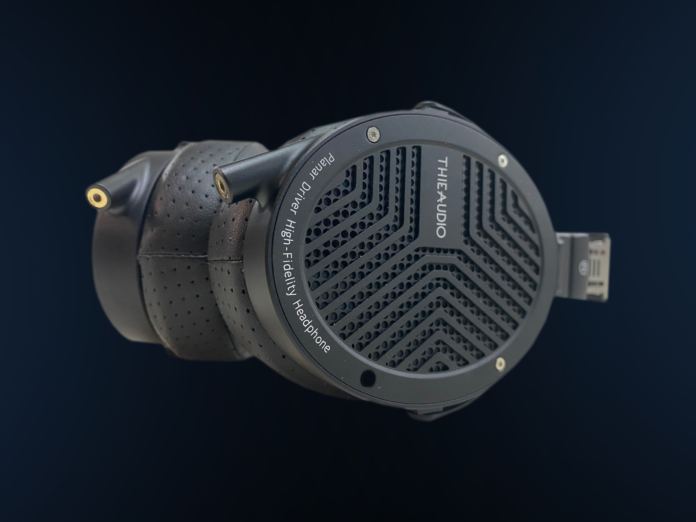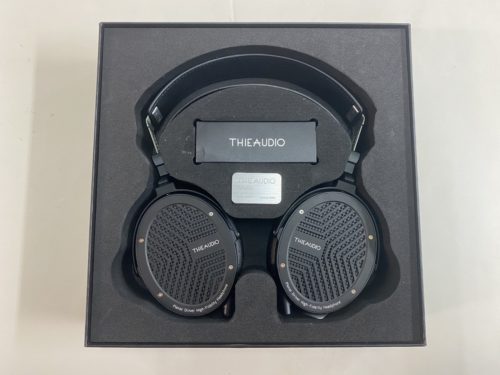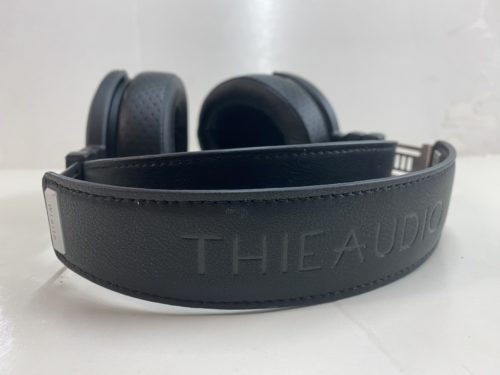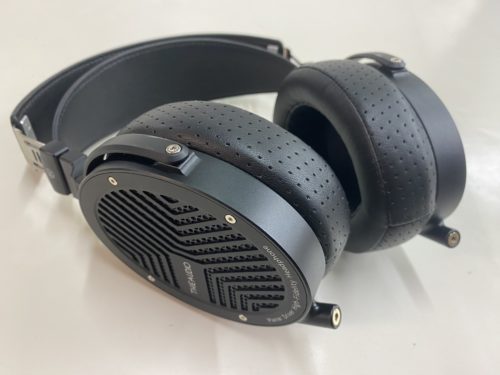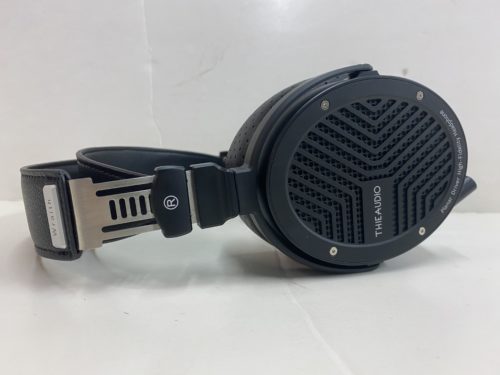If you’re familiar with ThieAudio, then you know their vast selection of IEMs. They’ve made some of the best on the market, including the Oracle and Monarch IEMs. When I found out they were venturing into over-ear headphones, I became excited to see what they could do. They have the Phantom, but I was never able to personally try it. The Wraith is a planar open-back headphone and looks to improve on all the parts the Phantom introduced. It costs $549, so let’s see if the Wraith stands against some of the other big hitters in this price range.
What You Get
- Wraith planar headphones
- 2.5mm to 4.4mm balanced cable
- User manual
Look and Feel
The Wraith is a very industrial-looking headphone. Every aspect of its build is extremely sturdy and durable, but they don’t strike you as particularly comfortable when you first look at them. Its all-metal body and steel frame also portray a heavier fit, but thankfully the Wraith isn’t that. I was surprised by how light they felt, and how well the ear cushions sealed to my head. The suspension headband really helps here, naturally adjusting to your head and not adding any extra pressure. This is a fantastic design for the price and hopefully has long-term value.
Design
Inside the Wraith is a 97mm planar magnetic driver. This is a massive system considering the price. The plates here are made thinner and use a new German conductor membrane that helps strengthen airflow and magnetic field. As a result, the driver is very efficient, and you’ll find the Wraith extremely easy to drive at only 23 Ohms.
Soundstage
Whenever I get an open-back planar headphone, the soundstage is usually the first thing I get excited about. With the Wraith, the width and imaging immediately set itself apart from a lot of other headphones in its price range. It isn’t airy or precise enough for reference, but where it shines is intimacy. It’s not a very wide soundstage, but the positioning of the stereo image is so far outside of your head that it doesn’t matter as much. Performances are articulately layered and offer great separation for larger spatial dimensions. The sounds wrap around you and mostly feel like they are originating from above you. This extends the height of the headphones and portrays sound elements as taller than you might imagine.
It feels like certain effects are properly distanced in the mix, standing out mostly with more ambient tracks and live concerts. However, the mix never appears too far ahead of you, as the Wraith is at its best when it’s dealing with closer mixes. The way it handles folkier tracks and acoustic performances contrasts greatly against big orchestrations. Its lack of width is made up for in big instruments and spaciousness helped by inward depth.
Low End
I wouldn’t consider the Wraith a bass headphone, but it doesn’t disappoint in this region. It’s the sub-bass that takes the back seat the most, feeling rather lean in the mix. You still get some nice texture and groove from it though, and it makes the lows always feel whole. It sits at the tip of your throat and never extends into bigger vibrating tones. However, you still get its excitement, and it plays well with the more fast and more hard-hitting mid-bass frequencies. Here, the bass really shows its color, offering more mass to its tone. Certain instruments really pop, including heavily distorted guitars which possess a fantastic crunch. I loved listening to both Metal and Shoegaze with the Wraith, as I felt it did a great job combining drive and natural clarity to the performances.
Mids
The energy of the Wraith is consistent in the midrange. It offers enough realism to instruments without appearing too cold and clinical. In fact, the Wraith is actually very warm but doesn’t bloat the tone with cloudiness. Articulation is always the focus of the Wraith, and a lot of the midrange response reflects that. Each section of the midrange makes itself clear and individualized while striking with emphasis to keep the region alive. There is always control over its liveliness, spotlighting musicality with natural propagation.
Highs
In the highs, the Wraith exhibits plenty of detail. It has a natural timbre, with enough extension to showcase more biting qualities. You never have to worry about harshness or sibilance, but the timbre doesn’t fall into dullness either. Like the mids, the highs give you spaciousness and realism, giving a clear identity to the region. There isn’t as much color or texture to the highs, but they’ll still present you with satisfying dissipation and reflective qualities.
Summary
After listening to the Wraith for many hours, I found them deeply enjoyable. Its sound signature is warm and spacious, bringing liveliness and detail to many different genres of music. It might not be the kind of bass response you’re looking for, but it still excels in many other regions. This is also one of the best builds for a planar headphone in its price range, reminding me of the level of quality you get with high-end Audeze headphones. At $549, ThieAudio has made the Wraith a unique set of cans and set itself up as a major player in the headphone game.
| Pros | Cons |
|
|
The ThieAudio Wraith is available at Audio46.
MAJORHIFI may receive commissions from retail offers.


